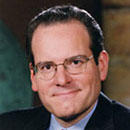Evan Ramstad: It's not just Minnesota -- the whole world is growing more slowly
Published in Business News
In my first column two years ago today, I spotlighted the fundamental economic force I believe Minnesotans most overlook — that the state’s population is growing more slowly than ever.
Because our population growth will remain slow into the 2030s and beyond, I asked: Will Minnesotans be able to stay rich without growth?
The answer is yes, if we rely more heavily on the other two legs of the economic stool, which are greater productivity and better development of resources, whether natural, intellectual or capital.
Mildly good news. Just before Christmas, new Census Bureau data showed Minnesota experienced the fastest growth of the 2020s during the 12 months ended June 30, 2024. The state’s population grew 0.7%, a bit faster than the 0.6% growth average in all Midwest states.
It was below the overall U.S. growth rate of 1%, though, and lower than the growth Minnesota experienced through the 2010s. And it won’t change Minnesota’s long-term trajectory.
Across the country during this most recent census year, the influx of immigrants played a bigger role in population growth than the normal ebb and flow of births and deaths known as “natural replacement.”
That’s especially noteworthy at this moment because President-elect Donald Trump wants to put the brakes on such growth by reducing the flow of immigrants to the U.S. and deporting millions who came here without authorization.
Nicholas Eberstadt, a political economist at the conservative-leaning American Enterprise Institute in Washington who has followed global population trends for years, told me we got to this point via the shortcomings of President Joe Biden and Trump.
“What Biden did by opening the (southern) border could not have poisoned public support for immigration better,” Eberstadt said. “He’s done about as well as any single leader could to undermine popular support for migration in the United States.”
As for Trump’s plans, Eberstadt said, “I can’t tell how much of this talk is performative and how much is actually supposed to be substantive. The United States will depend on attracting talent from abroad and it will also depend on the health of a free trade system. He has made noises against both of those things. I just don’t know where the performative ends and the substantive begins.”
Every time I write about Minnesota’s slowing population growth, readers contact me to say I shouldn’t worry about it. Some don’t want to see more immigrants in the state. Others say humans abuse the environment too much and it will be fine if there are fewer of us in the future.
I wonder if those readers know population growth is slowing everywhere. More demographers are starting to forecast the world’s population will peak sometime later this century, and will be declining before 2100.
Contrary to fears about global overpopulation that we’ve been reading in recent decades, the shrinking of the world looks inevitable because there’s been a global reduction in peoples’ desire to have children. Though specifics vary, all nations are seeing declines in the number of kids born to each woman. If the global average dips below 2.1 offspring per woman, earth’s population will begin to shrink.
Eberstadt wrote a lengthy article about this called, “The Age of Depopulation: Surviving a World Gone Gray” for the November-December issue of Foreign Affairs. He concluded population decline will lower economic growth and harm social welfare systems, with pay-as-you-go programs like Social Security destined to collapse. To adapt, governments and individuals will need to save money, not live on debt.
What’s more, he wrote, almost no one is grappling with the enormity of this change.
“In the United States and elsewhere, thinkers and policymakers are not ready for this new demographic order,” Eberstadt wrote. “Most people cannot comprehend the coming changes or imagine how prolonged depopulation will recast societies, economies and power politics.”
In our conversation in mid-December, Eberstadt said he first became interested in why populations slow down when the trend became noticeable in Japan and parts of Europe about 20 years ago. At that time, most U.S. states had “replacement-level fertility” rates above 2.1. Today, no state does.
“The below-replacement fertility regimen comes with this whole host of attitudes that it doesn’t have to be associated with, but just is,” Eberstadt said. “Less optimism about the future, less religiosity, less patriotism, less willingness to defend one’s country, more post-modern irony. All of these things which make for a less confident and cohesive society.”
In other words, the force of depopulation saps the creativity and energy needed to counteract it.
“What we want to do is to make sure that we’ve got a formula for maintaining and augmenting prosperity despite shrinking and aging,” Eberstadt said. “That is absolutely doable given the increasing education and skills in our populations, given improvements in health, given improvements in technology, the stock of productive knowledge, our entrepreneurial system and spirit.”
Minnesota as a state doesn’t yet have a declining population, though many of its rural counties and small towns do. The Minnesota Star Tribune and other media around the state routinely produce stories about businesses that are shrinking, institutions and traditions that are fading and adaptations that are emerging because of demographic change.
Slow-growing or declining places can’t accept as much failure because the cost of being wrong cannot be as easily overcome as it can in a growing place.
“You have much less margin for error when you have a shrinking, aging society because the big pool of new demand isn’t going to come in and rescue dumb mistakes,” Eberstadt said.
He is walking a tightrope, trying to be clear-eyed about demographic change while not sounding like a doomsayer. Similarly, I want to convey equanimity about Minnesota’s future in this column.
“The shrinking and aging of society also is bringing opportunities,” Eberstadt said. “It’s not being caused by a calamity. It’s being caused by people’s concerted, deliberate choices to have smaller families.”
He added, “We’ve got a world where we figured out the basic formula for how to eliminate material poverty through having a favorable business climate that allows us to unlock the value in human beings. I’m speaking in very broad terms, but all of that stuff can work with a shrinking and aging society if we will let it work.”
_____
©2025 StarTribune. Visit at startribune.com. Distributed by Tribune Content Agency, LLC.












Comments